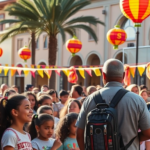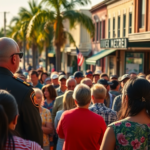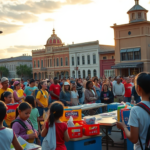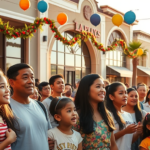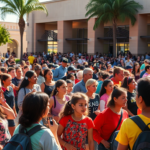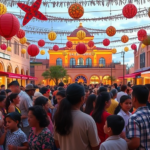World’s First 3D-Printed Starbucks Opens in Brownsville, Texas
The small South Texas town of Brownsville is garnering global attention as it unveils the world’s first 3D-printed Starbucks. Nestled at 2491 Boca Chica Blvd., this cutting-edge cafe marks a significant milestone not only for Starbucks but also for the burgeoning adoption of innovative construction technologies in the Rio Grande Valley (RGV) and beyond.
Revolutionizing Construction in the Valley
The newly debuted Starbucks, constructed using advanced 3D-printing technology, heralds a transformative phase in the construction sector, especially in areas like Brownsville where modern development is gradually reshaping the community landscape. This 1,400-square-foot structure, with a price tag of approximately $1.2 million, was realized using a robotic printer that carefully extruded concrete to form distinct layers, ultimately crafting a striped and textural Brutalist facade.
While Starbucks might be synonymous with its rich brews and cozy nook seating, this location is oriented towards efficiency, offering only drive-thru and grab-and-go services. This shift aligns with broader trends in quick-service models, aiming to cater to modern consumer needs for speed and convenience.
“Harnessing innovative technology like 3D printing in construction can drastically reduce the time and resources needed for development,” remarked David Salinas, an urban development expert from the University of Texas Rio Grande Valley. “For the RGV, which faces both economic challenges and growth opportunities, this method could signal a more cost-effective and sustainable path forward.”
Local Impact: A Cause for Excitement and Caution
For Valley residents, the inauguration of a 3D-printed Starbucks is not just a novel introduction but a potential harbinger of change in regional development dynamics. The RGV, with its rapidly growing population and ongoing demand for infrastructure, stands to benefit from the efficiencies offered by 3D printing technology—faster build times, reduced material waste, and potentially lower costs.
Miguel Arreola, a Brownsville resident and community organizer, expressed optimism about the new development approach, stating, “Having this kind of technology introduced into our town is exciting. It not only puts Brownsville on the map but also holds the promise of future jobs and economic growth.”
However, opinions are mixed. While some community members embrace this blend of technology and architecture, others remain skeptical of the long-term impacts. Architectural purists, for instance, might disdain its minimalist, even stark aesthetic, arguing that it lacks the warmth and historical cohesion typical in community-centric designs.
Connecting with Broader Trends
The implementation of 3D printing in Brownsville reflects wider trends seen in other parts of Texas, with Austin being a noted pioneer in integrating such technology into housing solutions. Past projects, like the 3D-printed homes, underscore the strategic advantage in areas where housing demand outpaces traditional building capabilities.
Meanwhile, alongside this innovative construction, traditional culinary experiences continue to evolve. La Panadería, San Antonio’s beloved bakery chain, is preparing to launch an express café at the Shops of La Cantera. Scheduled to commence construction in June and open by September, this location will focus on grab-and-go services, offering freshly baked pan dulce and other classic desserts.
Viewed together, these developments hint at a broader shift toward efficient, innovative service models, both in construction and retail sectors across South Texas, as businesses adapt to consumer preferences for speed and sustainability.
Future Implications for the Community
As South Texas continues to welcome such futuristic advancements, the long-term implications for the RGV community could be profound. The adoption of 3D-printing technology for commercial purposes might pave the way for local developers to explore similar methodologies in residential and public infrastructure projects.
Such an innovation could spur job creation, attract tech-related investments, and foster a more economically vibrant RGV. However, it remains crucial for local policy-makers to engage with community members, ensuring these developments align with the region’s socioeconomic goals and preserve the cultural integrity that Valley residents cherish.
Reflecting on these prospects, Commissioner Luis Torres of Cameron County noted, “Adopting these forward-thinking technologies requires balanced integration. We must strive to ensure that as we embrace new methods, we continue supporting our community’s needs and preserving what makes the Valley unique.”
For those interested in observing the continuing evolution of Brownsville and the broader RGV, more updates about this groundbreaking Starbucks and La Panadería’s upcoming developments at La Cantera are expected. Residents are encouraged to participate in public discussions to voice their opinions and contribute to the shaping of their community’s future.
In summary, while the opening of a 3D-printed Starbucks reflects a spark of innovation in the RGV, it encapsulates broader trends towards modernization and efficiency in South Texas. As the region navigates these changes, the focus remains on harnessing such advancements for community prosperity and longevity.


